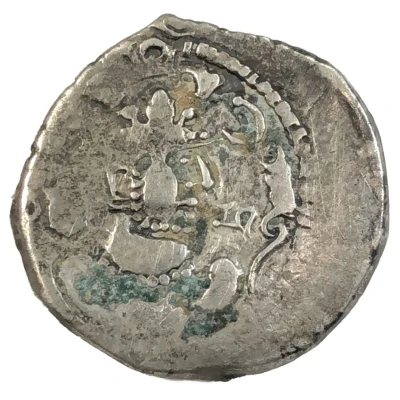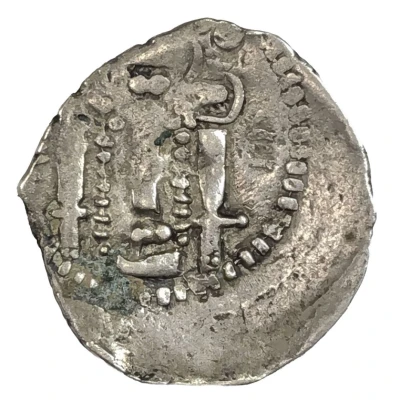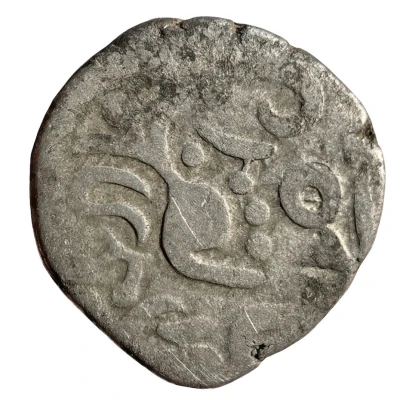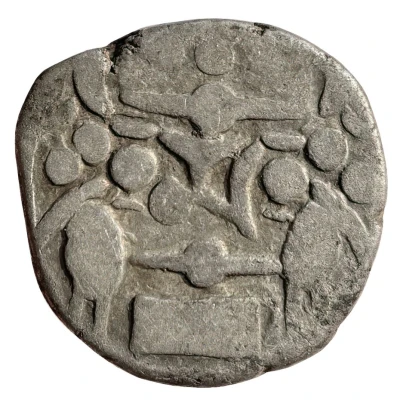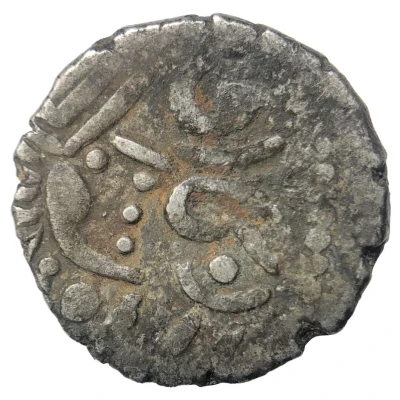
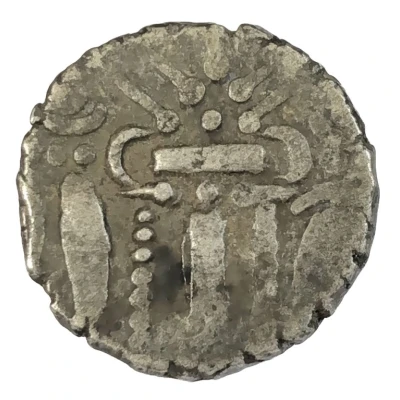

Drachm - Vigrahapala Proto Sri Vigra dramma ND
| Silver | 3.79 g | 18.93 mm |
| Issuer | Pratihara Empire (Indian Northern Dynasties) |
|---|---|
| Type | Standard circulation coin |
| Years | 778-883 |
| Value | 1 Drachm |
| Currency | Drachm (543-1390) |
| Composition | Silver |
| Weight | 3.79 g |
| Diameter | 18.93 mm |
| Thickness | 2.06 mm |
| Shape | Round (irregular) |
| Technique | Hammered |
| Orientation | Variable alignment ↺ |
| Demonetized | Yes |
| Updated | 2024-10-05 |
| Numista | N#422858 |
|---|---|
| Rarity index | 97% |
Reverse
Fire altar is flanked by two female attendants, wearing necklaces; their lower bodies are solid resembling skirts; hands towards the altar have merged with the altar and hands towards the border are shown hanging.
Fire is made up of dots, ending in lines.
The border is similar to that on the obverse.
Edge
Plain
Comment
Track 3 of Indo-Sassanian Coinage - Eastern Indo-Sassanian coinage - Imperial Pratihara Empire
The Pratiharas - Proto Sri Vigra - tentative period CE 778 - 883 CE
The placement of Sri above the head on the Proto Sri Vigra coins, follows the pattern of the previous series Sri Ma coins (link below), thus making these a successor.
Also, the motifs in this series have a close iconographical resemblance to the next in series Sri Vigra & Sri Vi coins.
Thus this series is placed between Sri Ma and Sri Vigra.
The coins can be classified into two types, with the first type further divided in two varieties -
Sketches and few sample coins -
Type 1 variety a
Fig 116a Another variant with some degradation
Type 1 variety b – the main differences between variety a and b –
Obv: larger ear and border dots are not joined
Rev: attendants become simple line drawings with the lower part of the body featuring only legs
Fig 116b
Type 2
Obv: The bust becomes cruder, nose straightens with a dot at the end; below this dot are three more dots representing lips and chin; eye is in a socket in the face area. The crown becomes a flat line. The motifs behind the bust take shape of a flower with a triangle above it. Border is a series of dots joined by a line.
Rev: Cruder as compared to Type 1. Horizontal lines with dots represent flames; altar is a thick pillar framed by a line of dots. Attendants are shown as thick bodies with legs. Border is made up of dots with no line joining them.
Fig 117
The letter above the head makes this a separate type; the Sri is replaced by letter Pra (fig 118) or in some coins Praa (fig119)
Fig 118 Fig 118 type Pra
Fig 119 Fig 119 type Praa
In Type 2, another letter Ja (with variations) is placed in front of the portrait (fig 120); there are very few coins showing 120a or 120b, most coins show 120c.
Fig 120 sample coin with 120b type Ja
The above information is based on studies conducted by KK Maheshwari & extracted from his book - Imitations in Continuity
Type 3
Some coins (unpublished in the referred book), seem to be between the earlier Sri Ma and Proto Sri Vigra:
partially visible presence of Sri? above crown,
the crown (looking like a hat) resembles that of some Sri Ma coins
motifs in front of bust lean towards Proto Sri Vigra
attendants on the reverse are very close to Type 1a of Proto Sri Vigra
samples for suggested Type 3
image credits -
1. Imitations in Continuity - K.K. Maheshwari
2. Amit Kher Collection
Interesting fact
One interesting fact about this coin is that it was used as a form of currency during the Pratihara Empire, which was a significant power during the medieval period in India, and its use can be traced back to the 8th century.















